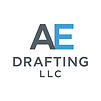Building a Safer Future: The Fascinating Journey of Building Permits Through History
- Carl Wessler Banks

- Jan 22, 2024
- 3 min read
Updated: Jan 23, 2024

The story of building permits is a fascinating journey through history, reflecting the evolution of architecture, urban planning, and societal values. From ancient times to the modern era, building permits have played a crucial role in shaping our cities and ensuring the safety and wellbeing of their inhabitants.
The Dawn of Regulation: Ancient Civilizations

Building permits can trace their roots back to ancient civilizations. In Mesopotamia, considered the cradle of civilization, there were strict codes regarding building construction. The Code of Hammurabi, one of the oldest deciphered writings of significant length in the world, included laws related to building construction and safety. This shows an early understanding of the need for regulatory measures in construction to ensure public safety and order.
The Middle Ages: A Shift Towards Organization

During the Middle Ages, the concept of building regulation evolved further. As European towns and cities grew, so did the complexity of their structures. This period saw the introduction of guilds, which played a pivotal role in overseeing construction standards. Guilds were responsible for ensuring that builders adhered to certain quality standards, marking an early form of what we would recognize today as building permits.
The Industrial Revolution: Birth of Modern Building Permits

The Industrial Revolution brought profound changes. Cities expanded rapidly, and the need for structured urban planning became evident. This era marked the birth of modern building permits. London's Building Act of 1844 is a landmark example, introducing regulations to control the construction of new buildings, a response to the chaos and health hazards of rapidly industrializing cities.
20th Century: Safety and Beyond

In the 20th century, the focus of building permits shifted significantly towards safety, both in terms of structural integrity and fire safety. The tragic Triangle Shirtwaist Factory fire in 1911 in New York City, which resulted in the death of 146 workers, was a turning point. It led to the implementation of stricter building codes and permit requirements, emphasizing not just the safety of the buildings but also of their occupants.
Today: Building Permits in the Modern World

Today, building permits are an integral part of urban planning and construction. They serve multiple purposes:
1. Ensuring Safety: The primary purpose of building permits is to ensure that structures are safe for occupancy and use. This includes adherence to fire codes, structural integrity, and electrical and plumbing safety standards.
2. Upholding Aesthetic Standards: In many regions, building permits also help in maintaining the aesthetic quality of neighborhoods, preserving historical sites, and ensuring that new constructions blend well with the existing environment.
3. Environmental Considerations: Modern permits often include environmental impact assessments, ensuring that new constructions are sustainable and environmentally friendly.
4. Legal Protection: For property owners, obtaining a building permit provides legal protection, ensuring that their property complies with local regulations and standards.
Conclusion

The history of building permits is a testament to humanity's ongoing effort to create safer, more organized, and aesthetically pleasing living environments. As we look to the future, the role of building permits will undoubtedly evolve to meet new challenges and innovations in construction and urban planning. But the core objective will remain the same: to ensure the safety, wellbeing, and satisfaction of the people who live in and use these structures.
-----------------------------------
© 2024 AE Drafting LLC. All rights reserved. No part of this blog may be reproduced, distributed, or transmitted in any form or by any means, including photocopying, recording, or other electronic or mechanical methods, without the prior written permission of AE Drafting LLC, except in the case of brief quotations embodied in critical reviews and certain other noncommercial uses permitted by copyright law. For permission requests, write to the publisher, addressed “Attention: Permissions Coordinator,” at the address of AE Drafting LLC.
AI Usage Disclaimer: For full transparency, please note that some of the content presented here on www.AEDrafting.com may be generated using artificial intelligence. Additionally, other parts of the content have been authored by Steve Tibbs and spell-checked with the assistance of AI. The images included are a mix of 3D models created by Steve Tibbs and others generated by AI technology. This blend of human creativity and AI capabilities aims to provide a unique and engaging experience.











Comments